“The bite came out of the blue.”

The truth is … our dogs are speaking and they are begging us to listen to them. In truth, too many of us do not understand the subtle signals that make up dog body language. When we don’t see, or if we choose to ignore, our dogs’ subtle signals, they have no choice but to speak louder through growls, barks, snarls … and even bites.
Growls are good!
In fact, a growl is just your dog’s only vocal way of telling you that he is uncomfortable and would like you to please stop doing what you are doing …
- “I get anxious when you restrain me. Please stop hugging me.”
- “It hurts when you pull on my matted fur. Please stop brushing me.”
- “Cars are scary. Please stop forcing me to get in.”
- “My joints hurt. Please stop petting my leg.”
- “I just want to enjoy my dinner. Please stop sticking your hand in my bowl.”
In truth, we have to stop thinking of dogs as our own little furry puppets that must be happy and compliant no matter what we choose to do to them. Dogs are sentient beings that feel grumpy, scared, tired, etc. We need to respect those feelings and give our dogs the grace to choose to tell us “Not right now, please.”
A growl is not a personal attack on you …
… please don’t take it as such. How many times have you snapped at a family member who is pestering you when you have a headache or had a bad day at work or just want a bit of alone time? Your dog is simply trying to communicate in a way that you will understand.
Never punish your dog for growling.
The biggest mistake that we can make is to punish our dogs for growling. In fact, a dog that has learned that he will be punished may stop growling. As a result, rather than giving you this important warning signal, they will go from subtle signals, straight to a bite.
DOG BODY LANGUAGE
Dogs speak with their bodies. Sometimes our dogs’ emotions are written all over their faces, so it is easy to determine how they are feeling. For example, almost anyone can tell which of these two dogs is happy that you are approaching.
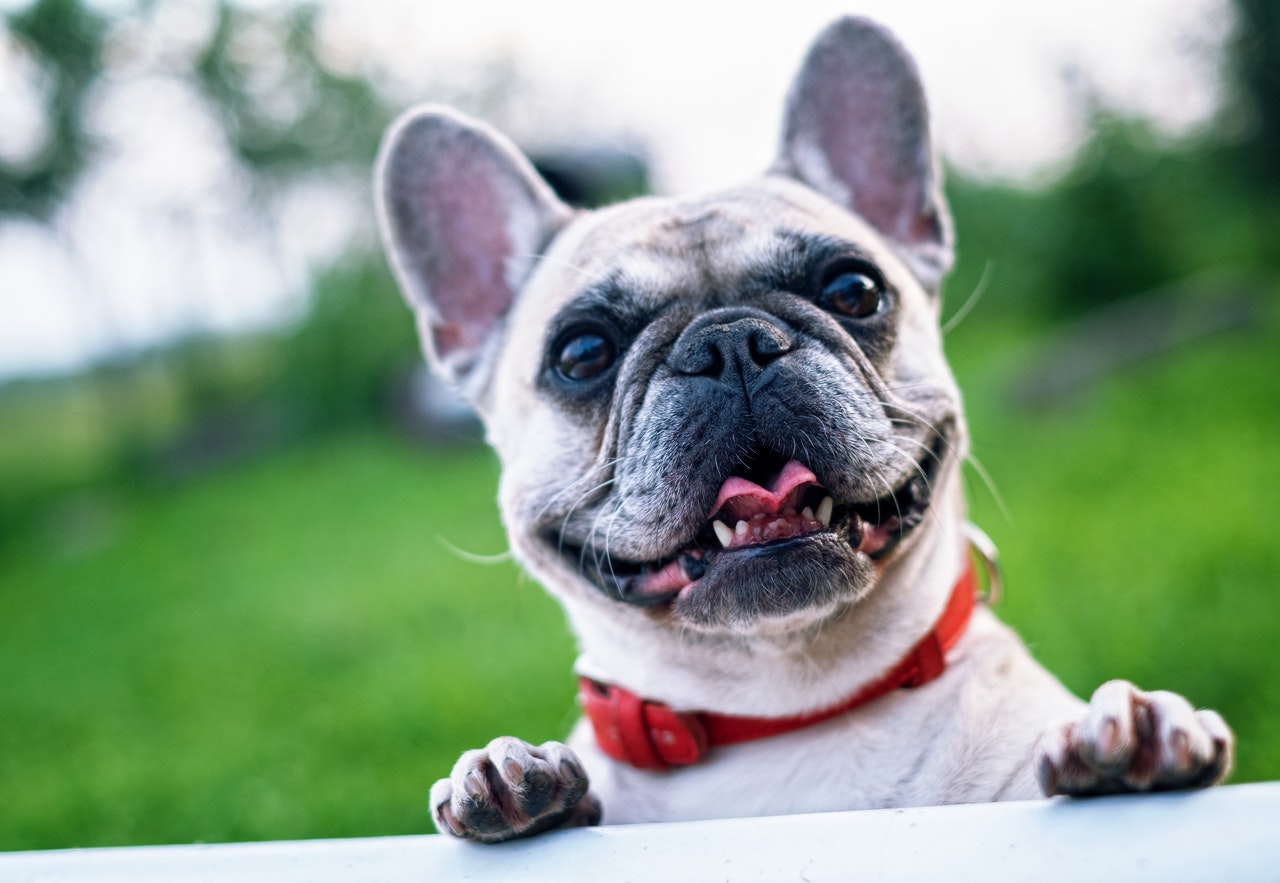

Most of the time, however, signs that a dog is uncomfortable are much more subtle. Does this dog want you to approach or move away? How can you tell? This blog post will teach you what subtle signals to look for and, what’s more, how to interpret dog body language.

The two cardinal rules for evaluating canine body language are:
- context matters; and
- always judge the enitre dog, not just a single body part.
Sign up for my Canine Body Language for Pet Parents webinar
JUST $12!
DOG BODY LANGUAGE: POSTURE
As I have noted, we can tell a lot about how our dogs are feeling by observing their posture and body position. Happy, relaxed dogs have a loose, fluid posture.


Anxious or unsure dogs have a stiff, tense posture.

If a dog’s posture stiffens and leans toward you when you approach, it is an indication that the dog is not comfortable. Basically, he is asking you to give him more distance. Similarly, crouching and/or leaning away are also very clear indicators that you are too close.


PERSONAL SPACE
Humans, dogs and other animals all have personal space bubbles. The size of any individual’s personal space bubble is unique and dependent on many factors. Think about how you feel when someone invades your personal space.
Just like humans, dogs can get very uncomfortable when their personal space is invaded. Dogs will show their discomfort with subtle body language. If you don’t listen and give them space, they will do one of three things: freeze and hope you just go away, flee from you or, as a last resort, bark and lunge in order to make you move away. The inability to flee is why many leashed, crated and tethered dogs bark and lunge when people and dogs approach.

DOG BODY LANGUAGE: THE TAIL
Firstly, study your dog’s normal tail carriage – or the normal carriage for his breed. A stressed dog will carry its tail high above its back or very low. – sometimes to the point of tucking it between the back legs. Docked tails not only impair a dog’s ability to express his feelings, but also make it difficult for other dogs (and people) to read his body language.



“His tail is wagging, he must be friendly.”
Yes. A happy dog will wag its tail; however, an anxious or stressed dog will also wag its tail. However, do not assume that a wagging tail is a signal that the dog wants to be petted. A relaxed dog will wag its tail in a wide, slow arc. A dog that is highly aroused will hold its tail high and wag its tail rapidly in a very small arch.
For this reason, do not judge a dog by its tail wag alone. Instead, always assess the entire dog in context. If the tail end is wagging, but the bitey end is growling and showing teeth, he does NOT want you to pet him!
DOG BODY LANGUAGE: THE EARS
Ear carriage changes with a dog’s emotions. Consequently, it is important to study your dog’s normal ear carriage. When his ears move up and/or forward or if they drop down and/or back, he is feeling stress of some sort … anxious, unsure, concerned, etc..





As has been noted with tail docking, cropping a dog’s ears make reading dog body language difficult for people and other dogs.

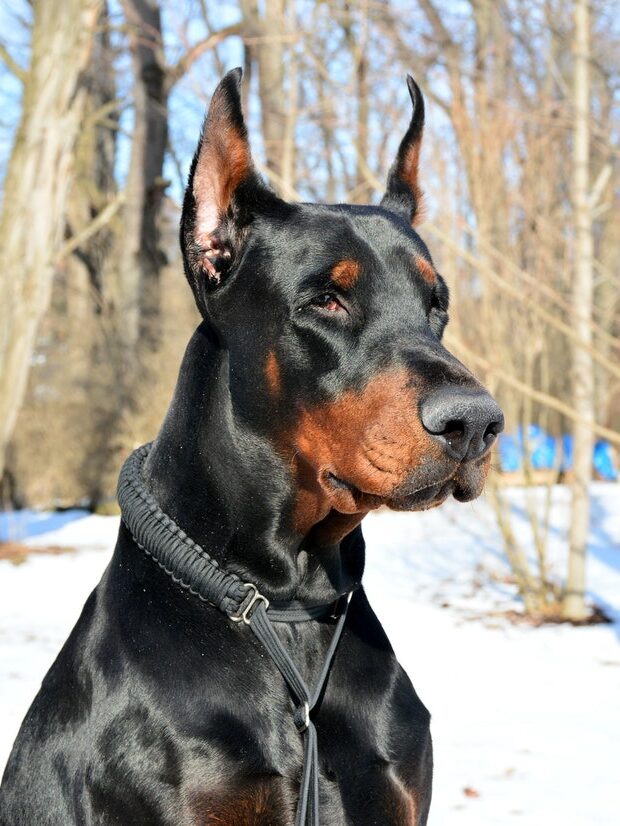
DOG BODY LANGUAGE: THE FACE
A dog’s face displays a wealth of communication signals. As a matter of fact, the eyes, brows, mouth, tongue and even the whiskers will change with your dog’s emotional state. Consequently, the signs of stress noted below can indicate that your dog is anxious, confused, concerned, frightened, etc. Regardless of the reason, when you see signs of stress in your dog, stop what you are doing, give him space and try to assess the situation to find out why your dog is stressed.
THE BROW
Dogs will wrinkle their brow or raise their eyebrows when they are feeling stressed or unsure. Hence, the classic “guilty look“. In fact, what this look really means is that your dog is feeling uncomfortable and unsure of a particular situation.


THE EYES
A relaxed dog’s eyes are generally more of an almond shape and have a soft, fluid look. A stressed dog may exhibit any of the following:
- wide and round eyes
- dilated pupils (the black circle in the middle of the eye is enlarged)
- whale eye (an arc of white showing around the edges of the eyes)
- “hard” eyes (more of a hard, focused stare).
- squinting – used to avoid eye contact



THE MOUTH
A relaxed dog has a relaxed mouth – either open, often with tongue hanging out, or closed with loose, relaxed lips. A stressed dog will have a closed, stiff mouth. In these dogs, the lips will be tense as well – often forming a long straight line. The mouth may be open with lips pulled backto create wrinkles at the corner of the mouth. But, if pressed, the dog may lift their lips to expose their teeth. Additionally, this may or may not be accompanied by a growl.




THE WHISKERS
The whiskers of a stressed dog will stick out prominently and be directed forward. Additionally, the whisker bed will be raised (the area around each whisker will be very pronounced).

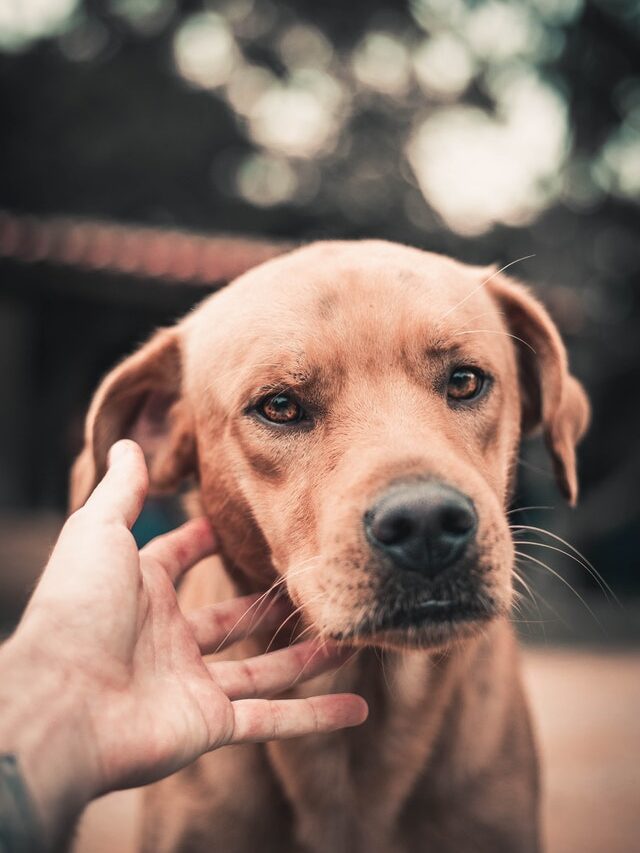
DOG BODY LANGUAGE: CALMING SIGNALS
When dogs feel anxious or are presented with stressful situations, they will perform behaviors meant to calm themselves or diffuse the situation. These behaviors are called calming signals or appeasement gestures. For example, paw lifts, lip licking, whale eye and yawns. When a dog is unsure, you will often see her avoiding eye contact either by turning her head to the side or by averting her eyes. Consequently, we often see calming signals when taking photos as pointing a camera/phone at a dog can make them uncomfortable.
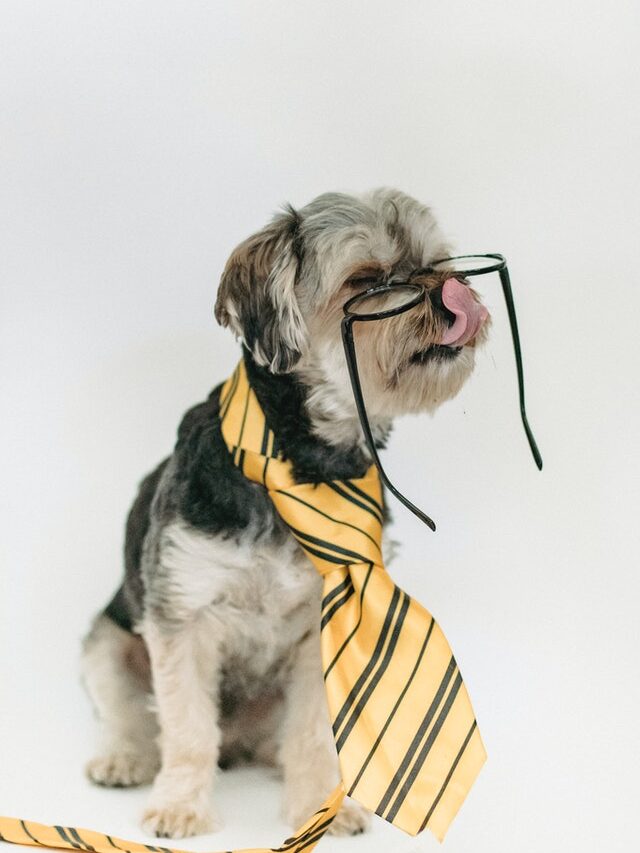



STUDY THE ENTIRE DOG – NOT JUST ONE BODY PART
Most important to remember, some dogs will present multiple signals. On the other hand, some dogs will present only one or two signals. As a result, always judge the entire dog, not just one body part. A dog may be wagging its tail, but … How is he holding his tail? How fast is it wagging? What about his eyes and ears? Is his mouth closed and tense or open and relaxed?
It is important to realize that even puppies are speaking to us through their body language.
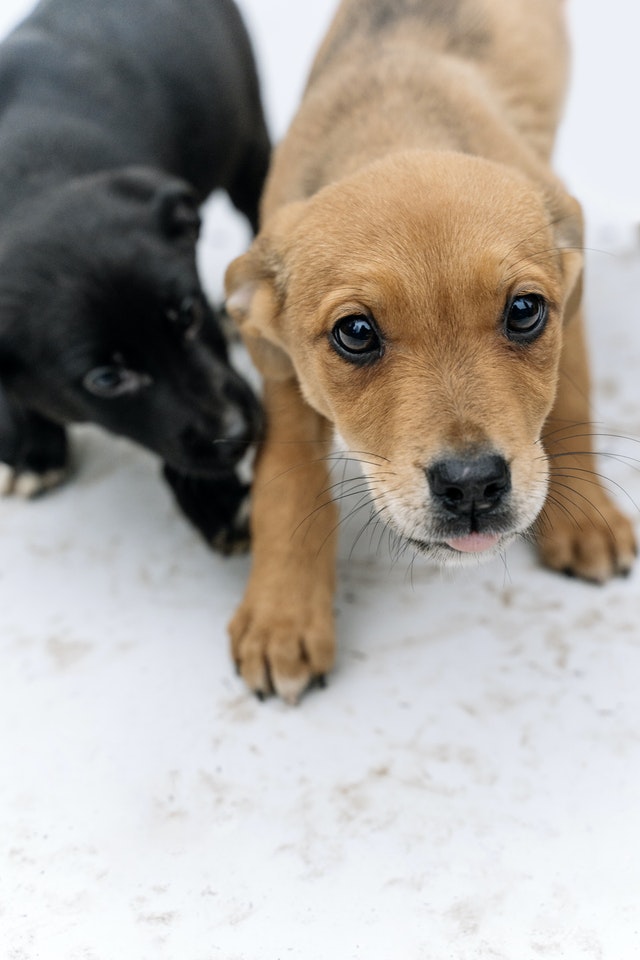



Sign up for my Canine Body Language for Pet Parents webinar
JUST $12!
Watch this great video on body language.
Dog Body Language: Quiz 1
Study these dogs. Which husky looks happier to see you at his gate?


- A. Open relaxed mouth, neutral ears, soft eyes, whiskers directed forward. This dog is exhibiting relaxed body language.
- B. Stiff posture, body directed forward, closed mouth with lips set in a straight line, whiskers directed forward, ears set back and down, hard eyes, high tail carriage. This dog is exhibiting stressed body language.
Dog Body Language: Quiz 2
Which of these dogs looks happy to be the recipient of human attention?
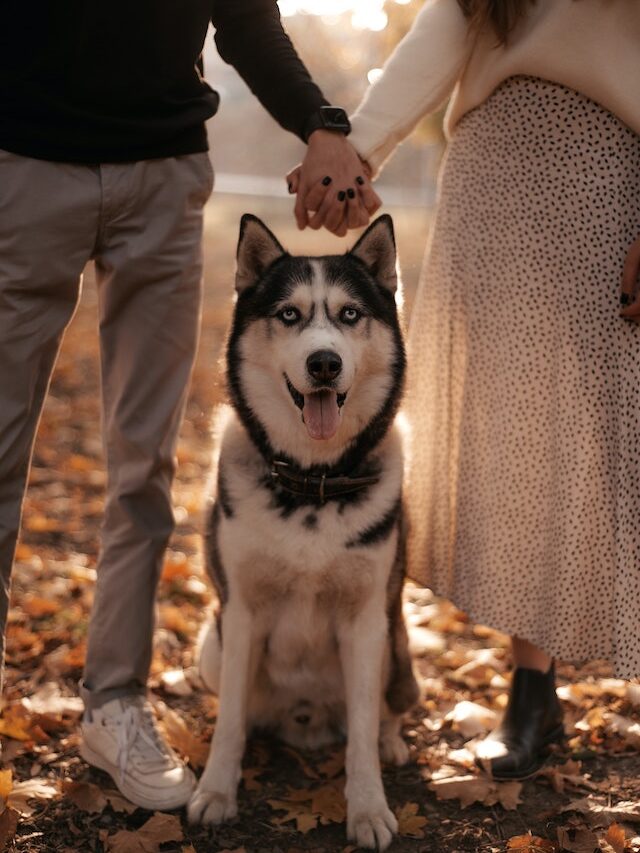





- A. Relaxed posture, open relaxed mouth, neutral ears, soft eyes. This dog is exhibiting relaxed body language.
- B. Stiff posture with body directed backward, wide round eyes with whale eye (difficult to see with the blue eyes), furrowed brow, ears pinned down and back, closed mouth with straight lips, whiskers directed forward. This dog is exhibiting stressed body language.
- C. Loose, relaxed posture, relaxed mouth, neutral ears. This dog is exhibiting relaxed body language.
- D. Stiff posture, closed mouth with straight lips, airplane ears, head turned away, whiskers directed forward. This dog is exhibiting stressed body language.
- E. Crouched posture, body directed away from the person, wide round eyes with whale eye, prominent whisker bed, closed mouth with straight lips, furrowed brow, ears pinned back;. This puppy is exhibiting stressed body language.
- F. Stiff posture with body directed away from person, yawning, squinting eyes. This dog is exhibiting stressed body language.
In fact, the dogs in photos A and C are the only ones in this group with relaxed body language. Note that in both of these photos, the human is not constraining the dog and is respecting its personal space.
Dog Body Language: Quiz 3
Using your new knowledge of body language, how has your interpretation of this photo changed? Does the dog want you to come closer or move away? What body language signals are telling you this?
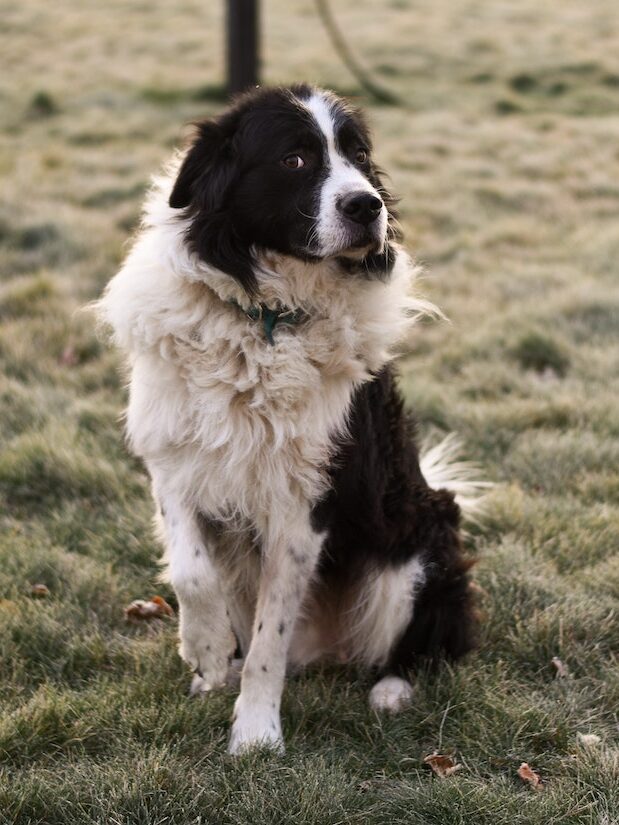
Basically, this dog is saying: Move away.
Signals: Tense posture directed backward, ears are pinned back and down, head is turned away, whale eye, tense closed mouth; paw lift.
Dog Body Language: Quiz 4
So, now go back through the rest of the photos in this blog. Specifically, what other stress signals do you see each dog exhibiting?
77% of dog bites happen with a family or friend's dog. Now that you know better, do better.
Dog Body Language: Quiz 5
Lastly, try out the new Family Paws Doggie Detective interactive body language tool.
RESOURCES
In conclusion, if your would like to learn more about dog body language, these are some excellent resources.
- Doggie Language by Lili Chin
- Kitty Language by Lili Chin
- Listen to Me! Exploring the Emotional Life of Dogs by Tricia Hollingshead
- On Talking Terms with Dogs: Calming Signals by Turid Rugaas
- Why Don’t You Listen to Me? by Hannah Capon
- Dogs inTranslation: A unique journey of observation and interpretation
by Katja Krauss and Gabi Maue - Canine Body Language: A Photographic Guide by Brenda Aloff
- A Kids’ Comprehensive Guide to Speaking Dog!: A fun, interactive educational resource to help the whole family understand canine communication by Niki Tudge
- Family Paws
- The Family Dog


